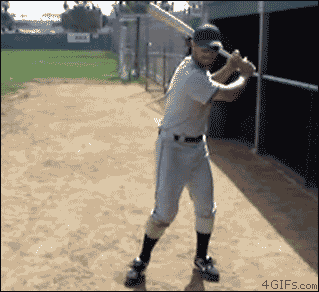Alright, so I did some pretty complex computational fluid dynamics calculations including wobble, and the results are very interesting! It seems my hypothesis that wobble doesn't create extra turn was wrong.
First off, here is a visualization of the simulation with wobble, where red color is high velocity and blue color is low velocity. The disc is travelling from right to left here. Note that I've fixed the wobble angle (10 degrees) and frequency here, so there is no damping or anything, it's just to see the effect the wobble has on the aerodynamics.
View attachment 339754
And here is the drag coefficient and moment coefficient. I start the wobbling around the 1 second mark, so we can see how the coefficients change compared to a throw without any wobble. The drag increases as expected, and the moment oscillates around the static value as the nose dips up and down. Remember that negative moment means turn and positive moment means fade. But we clearly see that the oscillation is not symmetric, the moment drops more when the nose is down compared to how much it increases when the nose is high during the wobble. This means that the net effect will be increased turn compared to no wobble. This comes in addition to the fact that off-axis torque will reduce the spin rate, which also lowers the stability of the disc and makes it turn more. I could go more in-depth on the reason this happens, but to keep it short it is because the air flow going under the disc changes more due to the dynamic wobbling (the wake becomes smaller compared to a static disc) compared to the flow over the disc.
View attachment 339755




